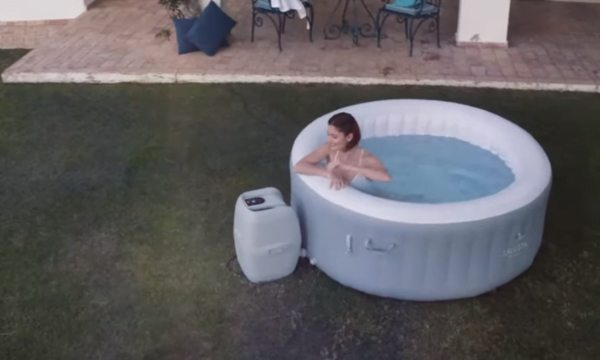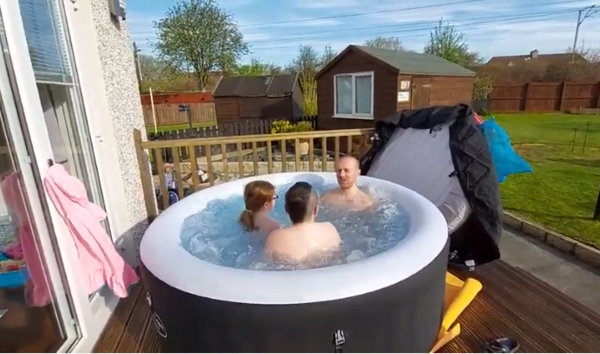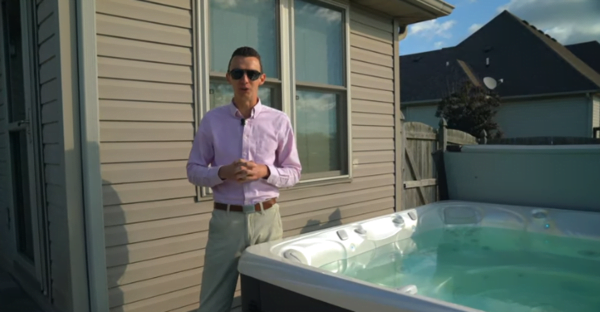This post explains how to keep your hot tub clean and sanitized so you can enjoy your time in it for years to come.
A hot tub is an excellent addition to any home. It's a relaxing way to unwind and spend quality time with family and friends. But have you ever wondered how to keep your hot tub clean and sanitized?
A hot tub can be a real hassle to maintain if you don't know how it's done. Not cleaning your hot tub can cause health issues, so it's essential to make sure that it is clean and sanitized regularly.
Do-It-Yourself Hot Tub Maintenance
Many believe owning a hot tub is too costly; they're not. You just need to understand water chemistry and establish a simple maintenance routine to keep your hot tub in prime condition. On average, you'll only spend about $20 per month for the upkeep, including some chemicals and testing supplies.
We'll give you the fundamentals of hot tub maintenance, but you can also do your own research later on when dealing with more specific details. You can find plenty of those on YouTube and hot tub care video courses. You can save hundreds of dollars doing it yourself rather than calling a hot tub professional every now and then.


With that in mind, let's get into the basics of hot tub maintenance.
Key Takeaways: Knowing how to do maintenance on your own saves you a lot of money in service fees.
The 3 Basic Rules of Hot Tub Maintenance (The 3Cs)
When you try to summarize everything hot tub owners should do to maintain a hot tub, they all boil down to just three principles: circulation, cleaning, and chemistry. If you do all of these and make it your daily and weekly routine, you can ensure your hot tub is in perfect condition every single time.


Here's what we mean by circulation, cleaning, and chemistry:
- Circulation - this means maintaining a good circulation in your hot tub, such as turning your pumps and jets at regular intervals to keep the water flowing.
- Cleaning - this involves removing contaminants, cleaning the filters, scrubbing off scum on the hot tub surfaces, cleaning and flushing the plumb lines, and changing the water every three to four months. We'll discuss the cleaning process later on in this article.
- Chemistry - keeping a balanced water chemistry makes it possible to use and reuse the water in your hot tub for an extended period of time. Otherwise, you'd be changing the water every time you use the hot tub. Note: draining and refilling your hot tub can take a day, making chemicals a necessity for every hot tub owner. We'll talk more about that later.
Key Takeaways: A good hot tub owner knows the 3 Cs by heart. Make it a part of your habit.
Maintain a Good Circulation in Your Hot Tub
Stagnant water is a breeding ground for germs and bacteria. You've probably seen this in ponds and small puddles of water. The same thing can happen in your hot tub. On the other hand, streams of flowing water stay clean and fresh all the time.
Most modern hot tubs are now equipped with an automatic circulation schedule. This way, you don't have to think about whether you've already circulated water or not. Just set the schedule, and your hot tub handles everything. If your hot tub doesn't have this feature, you can set a reminder to turn on the pump and jets once or twice a day. Around 15 to 20 minutes will do. The longer, the better.


Your filters will do an amazing job of keeping the water clean by maintaining circulation. The more you circulate the water in the hot tub, the cleaner it gets. Flowing water also inhibits the growth of germs and bacteria. It's like hitting two birds with one stone.
Filters are great when removing dirt and contaminants in your hot tub, but they don't remove oils, lotions, and soaps altogether. Some hot tub users came up with the ingenious idea of adding tennis balls into the hot tub to soak up the oils and soaps - and it works! Try them next time if you want to give your filters an extra boost.
Key Takeaways: Keeping circulation costs less than changing the water every now and then.
Set a Cleaning Schedule and Stick to It
Cleaning your hot tub should be part of your daily or weekly routine. You can do it at least once a week if you're like most people and don't have much time. Here are some areas in your hot tub you need to pay attention to:
- Hot tub shell. Scum develops quickly in certain areas, particularly the waterline, headrest, and waterfall. Fortunately, they're not too difficult to clean. You can scrub it off using a sponge and good old white vinegar. It's safe, effective, and costs you virtually nothing. When draining your hot tub, it's also important to include everything like the jets. Make sure the shell is squeaky clean before filling it up with water.
- Hot tubs have one or two of these. They're usually found at one side or corner of the hot tub, and taking them out is very simple. Some hot tub owners clean it using a jet of water to remove the dirt. This works well if you don't use your hot tub too often. But after a while, you'll need more than just soap and water. You'll need to soak it overnight in a cleaning solution for a deeper clean.
- Plumbing lines. Your hot tub water needs to be replaced every three or four months. This is the perfect time to flush the plumbing lines as well. These are found underneath your hot tub, where the water goes in through the pump to the heating element, the manifold, and back to the shell. Before draining the hot tub, remove the filter and pour the cleaning solution. Turn the jets on and let it circulate for 15 to 30 minutes. This will break up the sludge and grime that has built up over time in the pipes. Let it sit for 5 hours before draining the hot tub.
Key Takeaways: Always have a weekly, monthly, and yearly schedule for light and heaving cleaning.
Keep a Balanced Water Chemistry
The last thing you need to keep in mind is to keep the water chemistry within optimum levels. This means testing the water's pH levels, alkalinity, chlorine or bromine levels, and so on. Testing kits are available in hardware stores and hardware section, or you can order online.


Aim for the following when testing your water chemistry:
- Chlorine: 1.0-3.0 ppm
- Bromine: 2.0-4.0 ppm
- pH: 7.4-7.6
- Total Alkalinity: 80-120 ppm
- Calcium Hardness: 150-250 ppm
And here's what you need to keep your water chemistry at optimum levels:
- pH increaser and pH decreaser - use this if pH level is above or below the recommended pH.
- Alkalinity increaser - this protects you from sudden changes in the water's alkalinity.
- Sanitizer (chlorine or bromine) - keeps your hot tub free from germs and bacteria to kill bacteria. Note: chlorine kills germs faster and wanes quickly; bromine acts slowly but is more long-lasting.
- Shock (non-chlorine or dichlor) - restores some of the oxygen and chlorine (or bromine) levels by breaking up chloramines (or bromamines) in the water. It also improves your clarity.
- Test strips - allows you to check your water chemistry.
Key Takeaways: You don't need to spend much on chemicals if you keep balanced water chemistry all the time.
Conclusion
In conclusion, a good, basic maintenance schedule will help you keep your hot tub in good working order for many years to come. It's not as difficult as you might think. It just takes a little bit of time and some patience.
